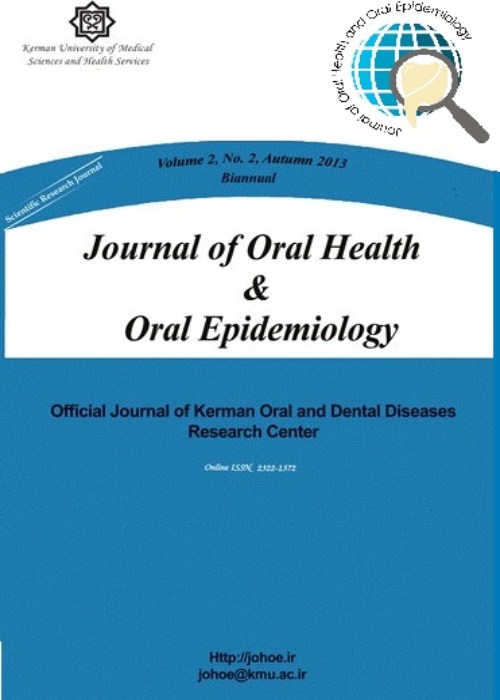A descriptive study on Bulgarian preclinical dental students’ knowledge and attitude towards coronavirus disease 2019 precautions and cross-infection control practices
Author(s):
Article Type:
Research/Original Article (دارای رتبه معتبر)
Abstract:
BACKGROUND AND AIM
One year after the novel coronavirus pandemic, there is a sustained risk of further global spread and most countries continue to impose preventive measures to mitigate the spread of coronavirus disease 2019 (COVID-19). The current situation outlined a specific reformulation of dental education in Medical University of Sofia, Sofia, Bulgaria – initial transition of face-to-face classes towards electronic learning (e-learning) processes, and subsequently, a transition from online teaching toward hybrid education. Therefore, the aim of the present study was to investigate preclinical dental students’ knowledge and attitude towards COVID-19 precautions as well as cross-infection control strategies.METHODS
This descriptive cross-sectional study was conducted online on 258 out of 516 preclinical dental students at the School of Dental Medicine, Sofia, using a self-administered questionnaire. Survey items were grouped in 3 general sections: educational experiences, students’ knowledge and perceptions of COVID-19 precautions and sources of relevant information as well as students’ personal experiences during the current pandemic.RESULTS
A total of 169 students participated in the study (response rate: 65.5%). Of them, 98 (57.9%) were second-year students, 42.6% were men, and their mean age was 21 ± 1 years. Almost one-third of the participants indicated violation of disinfection and sterilization protocols (28.9%) and the presence of aerosol-generating procedures (27.2%) as the most important COVID-19 predisposing factors in dental practice. Vaccination was suggested as the most effective way of prevention against the COVID-19. Proposed infection control practices included strict cleaning, disinfection, and sterilization (87.6%), personal protective equipment (PPE) (85.8%), frequent ventilation (53.3%), and treatment after a negative polymerase chain reaction (PCR) (or other) test (46.2%). Social media was considered as the main source for pandemic-related information (68.0%).CONCLUSION
In the light of COVID-19, dental students demonstrated a satisfactory level of knowledge regarding standard precautions in dental practice; however, more attention should be paid to additional transmission-based precautions to ensure the safety of educational and working environment.Keywords:
Language:
English
Published:
Journal of Oral Health and Oral Epidemiology, Volume:10 Issue: 3, Summer 2021
Pages:
20 to 30
magiran.com/p2352894
دانلود و مطالعه متن این مقاله با یکی از روشهای زیر امکان پذیر است:
اشتراک شخصی
با عضویت و پرداخت آنلاین حق اشتراک یکساله به مبلغ 1,390,000ريال میتوانید 70 عنوان مطلب دانلود کنید!
اشتراک سازمانی
به کتابخانه دانشگاه یا محل کار خود پیشنهاد کنید تا اشتراک سازمانی این پایگاه را برای دسترسی نامحدود همه کاربران به متن مطالب تهیه نمایند!
توجه!
- حق عضویت دریافتی صرف حمایت از نشریات عضو و نگهداری، تکمیل و توسعه مگیران میشود.
- پرداخت حق اشتراک و دانلود مقالات اجازه بازنشر آن در سایر رسانههای چاپی و دیجیتال را به کاربر نمیدهد.
In order to view content subscription is required
Personal subscription
Subscribe magiran.com for 70 € euros via PayPal and download 70 articles during a year.
Organization subscription
Please contact us to subscribe your university or library for unlimited access!


